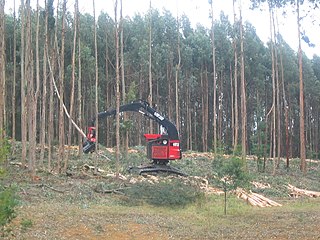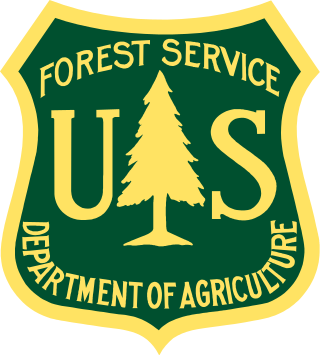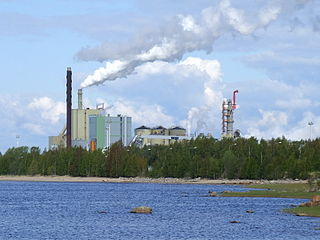Stora Enso Oyj is a Finnish and Swedish forest industry company. It develops and produces various materials, mostly based on wood, for a range of industries and applications worldwide. It has headquarters in Helsinki, Finland, and Stockholm, Sweden. The majority of sales takes place in Europe, but there are also significant operations in Asia and South America. Stora Enso was formed in 1998, when the Swedish mining and forestry products company Stora AB merged with the Finnish forestry products company Enso Oyj. In 2023, there were 20,000 employees. In 2015, Stora Enso was ranked seventh in the world by sales and fourth by earnings, among forest, paper and packaging industry companies. For the first two quarters of 2018, the company was ranked second by net earnings among European forest and paper industry companies. The corporate history can be traced back to the oldest known preserved share certificate in the world, issued in 1288. Based on this, some observers consider Stora Enso to be the oldest limited liability company in the world.

Svenska Cellulosa Aktiebolaget SCA is a Swedish timber, pulp and paper manufacturer with headquarters in Sundsvall. It has approximately 3,300 employees and a turnover of approximately SEK 20.8 billion. Its main products include many one-use paper products, containerboard, solid-wood products, pulp and forest-based biofuel. SCA is Europe's largest private owner of forest land, with 2.7 million hectares. The global hygiene product company Essity was part of SCA until 2017.
The pulp and paper industry in Europe accounts for about a quarter of world production and is a major employer. The leading producing countries are Finland, Sweden and Germany. The industry is a large user of renewable energy and achieved a recycling rate of 71.5% in 2015.

Pulpwood can be defined as timber that is ground and processed into a fibrous pulp. It is a versatile natural resource commonly used for paper-making but also made into low-grade wood and used for chips, energy, pellets, and engineered products.

Bagasse is the dry pulpy fibrous material that remains after crushing sugarcane or sorghum stalks to extract their juice. It is used as a biofuel for the production of heat, energy, and electricity, and in the manufacture of pulp and building materials. Agave bagasse is similar, but is the material remnants after extracting blue agave sap.

A biorefinery is a refinery that converts biomass to energy and other beneficial byproducts. The International Energy Agency Bioenergy Task 42 defined biorefining as "the sustainable processing of biomass into a spectrum of bio-based products and bioenergy ". As refineries, biorefineries can provide multiple chemicals by fractioning an initial raw material (biomass) into multiple intermediates that can be further converted into value-added products. Each refining phase is also referred to as a "cascading phase". The use of biomass as feedstock can provide a benefit by reducing the impacts on the environment, as lower pollutants emissions and reduction in the emissions of hazard products. In addition, biorefineries are intended to achieve the following goals:
- Supply the current fuels and chemical building blocks
- Supply new building blocks for the production of novel materials with disruptive characteristics
- Creation of new jobs, including rural areas
- Valorization of waste
- Achieve the ultimate goal of reducing GHG emissions

The Forest Products Laboratory (FPL) is the national research laboratory of the United States Forest Service, which is part of USDA. Since its opening in 1910, the FPL has provided scientific research on wood, wood products and their commercial uses in partnership with academia, industry, tribal, state, local and other government agencies. The laboratory is headquartered in Madison, Wisconsin. The focus of the Forest Products Laboratory is to promote healthy forests and forest-based economies through the efficient, sustainable use of the Nation's wood resources.

A biocomposite is a composite material formed by a matrix (resin) and a reinforcement of natural fibers. Environmental concern and cost of synthetic fibres have led the foundation of using natural fibre as reinforcement in polymeric composites. The matrix phase is formed by polymers derived from renewable and nonrenewable resources. The matrix is important to protect the fibers from environmental degradation and mechanical damage, to hold the fibers together and to transfer the loads on it. In addition, biofibers are the principal components of biocomposites, which are derived from biological origins, for example fibers from crops, recycled wood, waste paper, crop processing byproducts or regenerated cellulose fiber (viscose/rayon). The interest in biocomposites is rapidly growing in terms of industrial applications and fundamental research, due to its great benefits. Biocomposites can be used alone, or as a complement to standard materials, such as carbon fiber. Advocates of biocomposites state that use of these materials improve health and safety in their production, are lighter in weight, have a visual appeal similar to that of wood, and are environmentally superior.
Berndt Wilhelm Schauman was a Finnish industrialist, the most important in Jakobstad at the beginning of the 20th century. He was the older brother of Ossian Schauman, and a member of the Schauman noble family. Wilhelm Schauman's first industrial installation was a small chicory factory, which he founded in 1883. He was also involved in the local tobacco factory as part of the management. Apart from this, he continuously founded new enterprises such as a sugar refinery, a steam-powered saw mill and a plywood factory, which was the first of its kind in Finland. His enterprises soon expanded beyond the borders of Jakobstad.
Second-generation biofuels, also known as advanced biofuels, are fuels that can be manufactured from various types of non-food biomass. Biomass in this context means plant materials and animal waste used especially as a source of fuel.

Renewable energy in Finland increased from 34% of the total final energy consumption (TFEC) in 2011 to 48% by the end of 2021, primarily driven by bioenergy (38%), hydroelectric power (6.1%), and wind energy (3.3%). In 2021, renewables covered 53% of heating and cooling, 39% of electricity generation, and 20% of the transport sector. By 2020, this growth positioned Finland as having the third highest share of renewables in TFEC among International Energy Agency (IEA) member countries.
Air-laid paper is a textile-like material categorized as a nonwoven fabric made from fluff pulp.
Yhtyneet Paperitehtaat Oy was a Finnish forest industry company which was created in 1920 and the paper company formed UPM-Kymmene PLC together with Kymmene in 1996.

The Alholmens Kraft Power Station is a biomass power station in Alholmen, Jakobstad in Ostrobothnia region, Finland. It is the largest biomass cogeneration power station in the world.
Jussi Pesonen was the president and chief executive officer of the Finnish pulp, paper and timber company UPM 2004-2023.
Bioproducts engineering or bioprocess engineering refers to engineering of bio-products from renewable bioresources. This pertains to the design and development of processes and technologies for the sustainable manufacture of bioproducts from renewable biological resources.
Cellulosic sugars are derived from non-food biomass (e.g. wood, agricultural residues, municipal solid waste). The biomass is primarily composed of carbohydrate polymers cellulose, hemicellulose, and an aromatic polymer (lignin). The hemicellulose is a polymer of mainly five-carbon sugars C5H10O5 (xylose). and the cellulose is a polymer of six-carbon sugar C6H12O6 (glucose). Cellulose fibers are considered to be a plant’s structural building blocks and are tightly bound to lignin, but the biomass can be deconstructed using Acid hydrolysis, enzymatic hydrolysis, organosolv dissolution, autohydrolysis or supercritical hydrolysis. A more recent mechanical method offers hope that at last, a more economic and waste free method has been found although it is still to scale and is not yet commercial.

Forest industry in Finland consists of mechanical (timber) and chemical forest industry. Finland is one of the world's largest producer of pulp, paper and cardboard and one of Europe's largest producers of sawn timber. The forest industry directly and indirectly employs approximately 160,000 people in Finland. The industry's multiplier effects extend broadly into surrounding society.

Sunshine Kaidi (Finland) New Energy Co. Oy is an energy company that plans to build a biofuel refinery in Kemi, Finland. It is a subsidiary of the Chinese energy company Sunshine Kaidi New Energy Group. The refinery would use second generation biofuel technology. Its investment value is around one billion euros.
Hemp paper is a paper variety consisting exclusively or to a large extent from pulp obtained from fibers of industrial hemp. The products are mainly specialty papers such as cigarette paper, banknotes and technical filter papers. Compared to wood pulp, hemp pulp offers a four to five times longer fibre, a significantly lower lignin fraction as well as a higher tear resistance and tensile strength. Because the paper industry's processes have been optimized for wood as the feedstock, production costs currently are much higher than for paper from wood.











